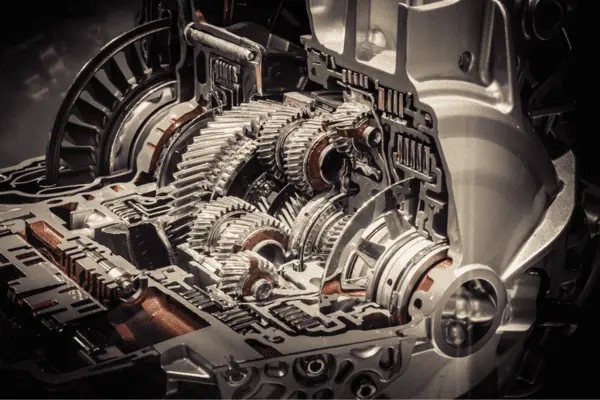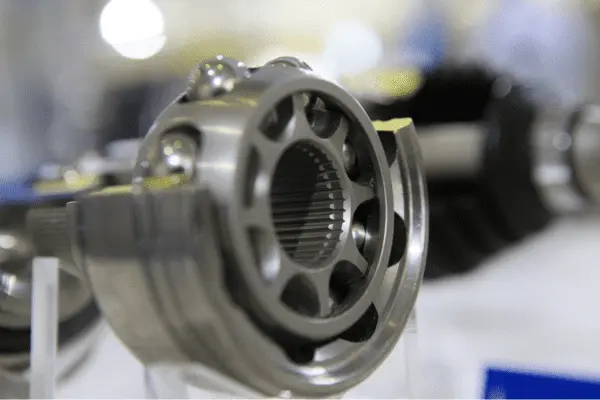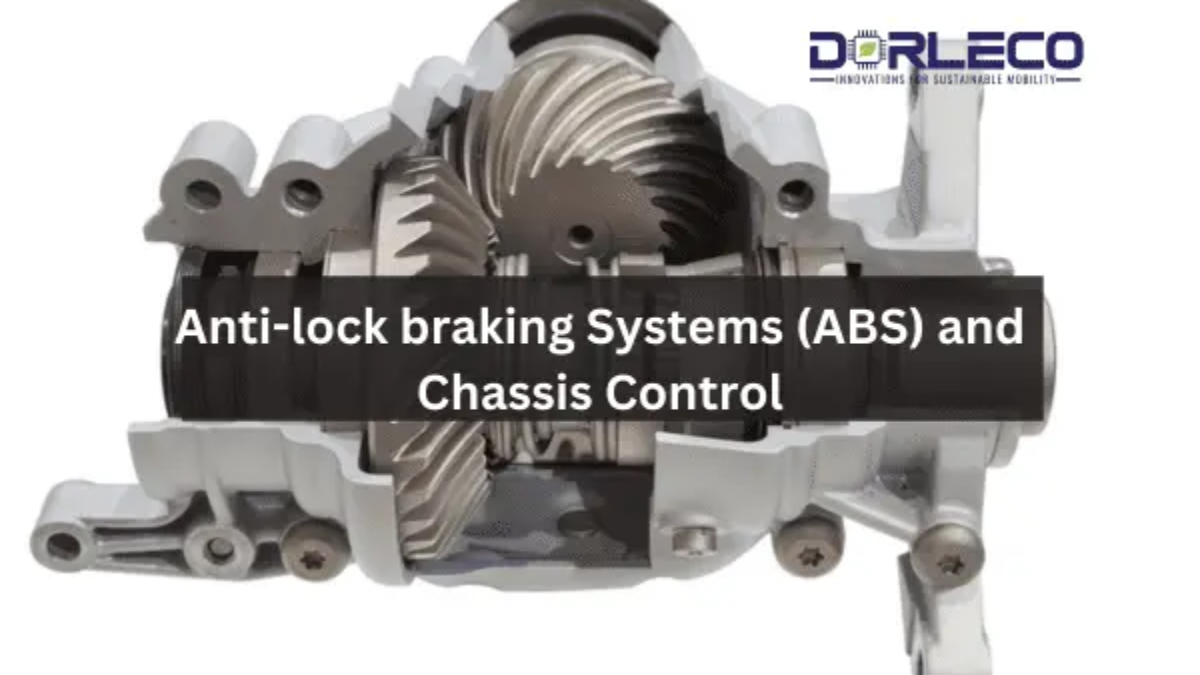Introduction
Safety has always come first in the quickly evolving field of automotive technology. The most significant advancements in enhancing vehicle safety are the invention and application of chassis control and anti-lock braking systems (ABS). These gadgets are proof of the creativity and commitment of engineers to improving the safety of everyone who uses our roads.
One significant advancement in how automobiles handle their braking is the Anti-Lock Braking System or ABS. When stopping fast or in slick conditions, using conventional braking systems may cause wheel lock-up, which could cause a loss of control and increase the risk of an accident. ABS uses an intricate network of sensors and valves to continuously monitor wheel speed and adjust braking pressure to prevent wheel lock-up.
Even while using sudden brakes, the driver may maintain steering control because ABS technology keeps the wheels in perfect contact with the road. ABS significantly reduces the chance of skidding or fishtailing and shortens the stopping distance, making it a crucial component of modern car safety.
On the other hand, chassis control complements anti-lock braking systems by focusing on the overall stability and handling of the vehicle. It consists of various parts, such as the Dynamic Stability Control (DSC), Traction Control System (TCS), and Electronic Stability Control (ESC), which work together to enhance the overall control and stability of the vehicle.
For example, Electronic Stability Control intervenes when it senses a loss of control, braking certain wheels automatically and controlling engine power to keep the vehicle on the intended path. In particular, on slick roads, the traction control system makes sure that the tires effectively hold the pavement by reducing wheel spin when accelerating.
Dynamic stability control continuously monitors several vehicle variables and takes appropriate action if it detects any deviations from the intended trajectory.
Together, anti-lock brake systems and chassis control technologies significantly reduce the likelihood of accidents related to braking and vehicle stability, which is a major advancement in automotive safety. These gadgets protect not just the driver and passengers but also other road users and pedestrians.
As technology develops, we can expect more developments and breakthroughs in ABS and chassis control, which will take us one step closer to the ultimate goal of offering safer and more secure transportation for all users of the road. In this introduction, we will delve deeper into the principles, components, benefits, and possible uses of these vital vehicle safety technologies.
Benefits of Chassis Control and Anti-Lock Braking Systems (ABS)

Numerous advantages of the Anti-Lock Braking Systems (ABS) and Chassis Control technologies significantly increase driving comfort, safety, and stability. The following are some of the primary advantages of ABS and chassis control systems:
1. Enhanced Braking Performance:
ABS: ABS prevents the wheels from locking up during braking, preserving steering control for the driver. This leads to shorter stopping distances and improved overall braking performance, especially on slick roads.
Chassis Control: One chassis control technology that improves braking by distributing brake force to specific wheels to keep the vehicle stable and under control during emergency maneuvers is Electronic Stability Control (ESC).
2. Reduced Risk of Loss of Control and Skidding:
ABS: By preventing wheel lock-up, ABS significantly reduces the possibility of skidding and losing control when applying heavy braking or on slick roads. This is very important to avoid mishaps.
Chassis control: To ensure that the automobile stays on its intended route and reduces the risk of a spin, devices like the Electronic Stability Control (ESC) and Traction Control System (TCS) actively intervene to stop understeer or oversteer.
3. Improving Steering Reaction
ABS: By enabling the driver to maintain control of the vehicle even when applying full brakes, ABS enhances the ability to steer around obstacles or avoid hazards while stopping.
ABS is used in conjunction with chassis control systems to enhance steering response, especially in challenging driving conditions.
4. Enhanced Grip
By preserving the optimum tire-road contact possible, anti-lock braking systems (ABS) reduce the chance of wheelspin during braking or acceleration.
Chassis Control: To enhance traction in slick circumstances, TCS and other traction control systems dynamically adjust the amount of power delivered to the wheels.
5. Maintaining Control and Stability under Adverse Circumstances:
ABS: ABS works incredibly effectively in bad weather, including rain, snow, or ice, when it can be quite hard to maintain control.
Chassis Control: To improve safety, Chassis Control systems constantly assess the vehicle’s stability and make the necessary adjustments.
The drawbacks of chassis control and anti-lock braking systems (ABS)

Although chassis handling technologies and anti-lock braking systems (ABS) greatly increase vehicle handling and safety, they are not without problems. It’s essential to understand these drawbacks to utilize these technologies appropriately and make informed decisions. Some disadvantages of ABS and chassis control are as follows:
1. Possibility of Lengthened Braking Distances
There are various situations where ABS may result in somewhat longer stopping distances as compared to an experienced driver operating a car without ABS. This may occur when there is not much traction on the road or when the system modulates the braking pressure excessively.
2. Possibility of Lengthier Stopping Range:
In certain situations, ABS can result in somewhat longer stopping distances as compared to an experienced driver operating a vehicle without the system. The reason for this could be a poorly paved road or an excessive modulation of the brake pressure by the system.
3. Diminished “Feel” in Certain Drivers:
Some drivers enjoy the classic “feel” of a non-ABS brake pedal since it provides an instantaneous response from the brakes. ABS may not be as natural to some drivers, which could make driving less fun.
4. Concerns about Dependability
Numerous sensors and electrical components, which are prone to malfunction or issues with sensor calibration, are used in these systems. Defective sensors might lower the vehicle’s overall safety by sending out false signals or even shutting down the system.
5. Reduced Stopping Distance Misconception:
It’s a common misconception among drivers that ABS miraculously reduces stopping distances, even though it can significantly reduce the likelihood of wheel lock-up and improve control when breaking. In actuality, stopping distances depend on a variety of factors, including the quality of the tires and the condition of the roadways.
6. Restricted Efficiency on Specific Surfaces:
ABS and Chassis Control systems could not perform well when driving on extremely slick surfaces, such as ice or heavy snow, where maintaining traction is more challenging.
7. Reduced Stopping Distance Misconception:
It’s a common misconception among drivers that ABS miraculously reduces stopping distances, even though it can significantly reduce the likelihood of wheel lock-up and improve control when breaking. In actuality, stopping distances depend on a variety of factors, including the quality of the tires and the condition of the roadways.
8. Restricted Efficiency on Specific Surfaces:
ABS and Chassis Control systems could not perform well when driving on extremely slick surfaces, such as ice or heavy snow, where maintaining traction is more challenging.

Conclusion:
In summary, advances in chassis control and anti-lock brake systems (ABS) have completely changed how cars manage braking, stability, and overall road safety. Numerous benefits are provided by these technologies, such as better control in difficult driving situations, a lower chance of collisions, and increased braking performance. ABS keeps wheels from locking up during braking, allowing drivers to keep control of their steering even in emergencies. Electronic Stability Control (ESC) and other chassis control systems also improve the traction and stability of the vehicle.
It’s important to recognize these technologies’ drawbacks, though, including higher costs, more complicated maintenance, and possible dependability problems. In addition to continuing to improve their driving techniques, drivers must be aware of these limitations and not rely only on ABS and chassis control systems.
To view our excellent VCU products and services and to find out more about our software development capabilities for battery-specific applications, send an email toinfo@dorleco.com

